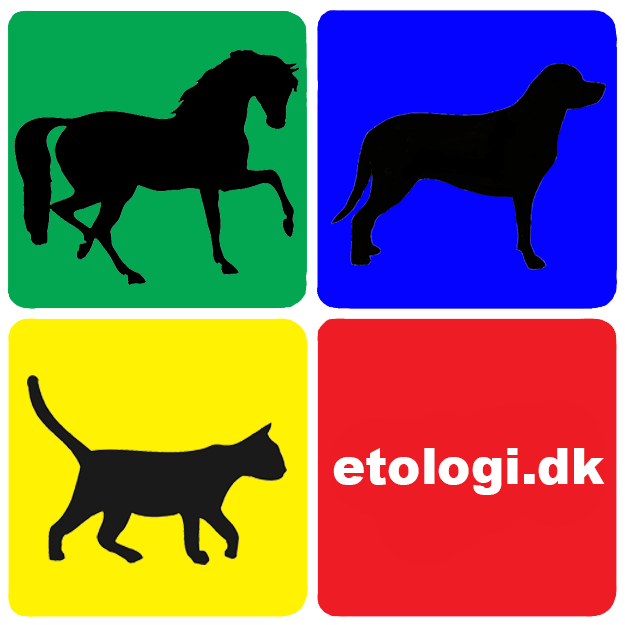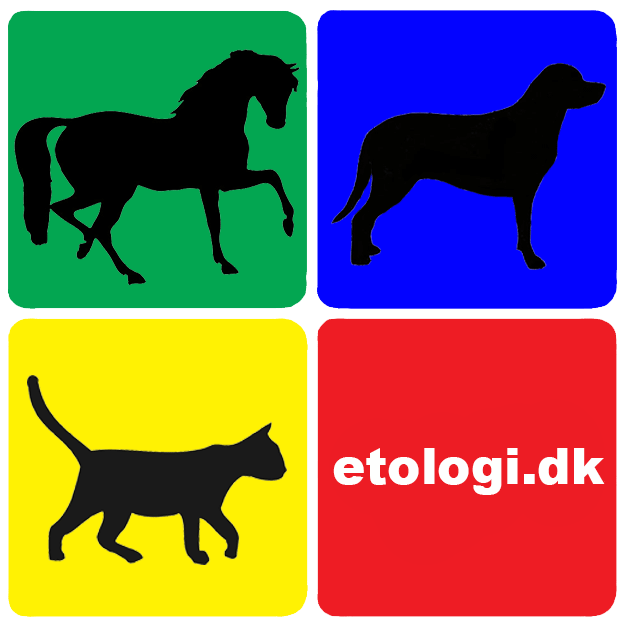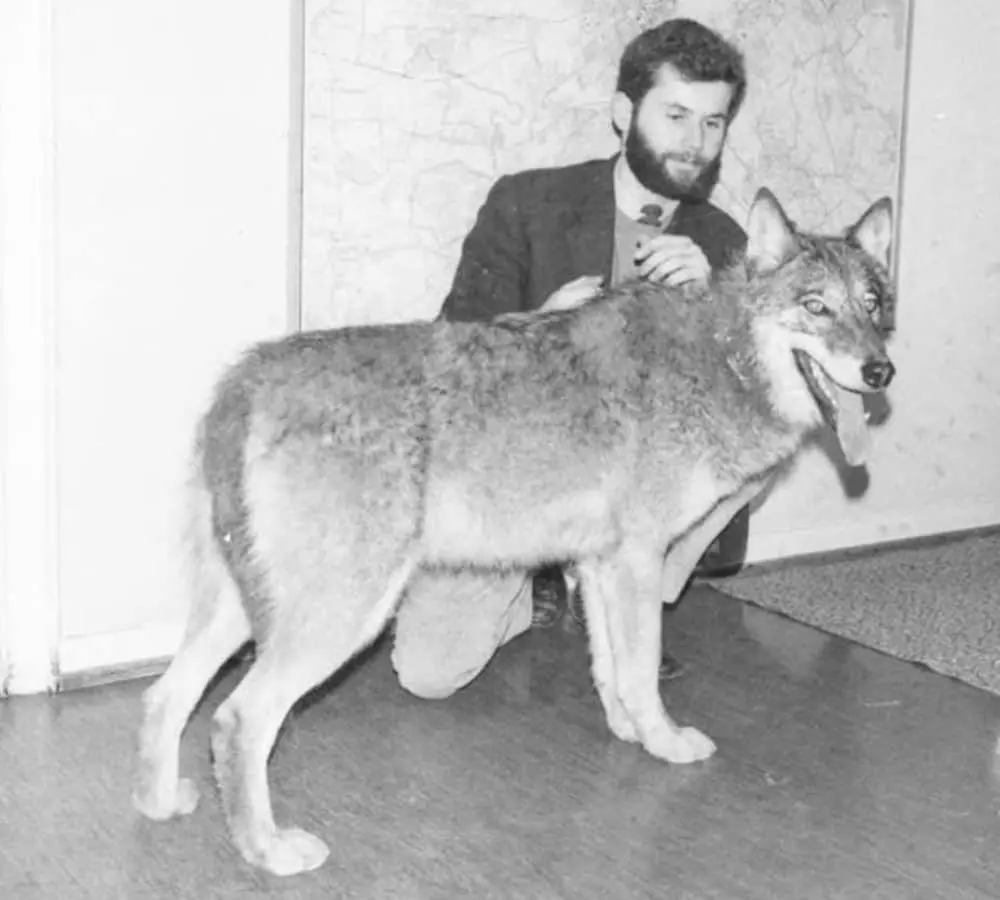
Date: November 7, 2023
Author: Roberto Barata
How to cite: Barata, R. (2023). Zimen’s Wolf-Dog Experiment. Human-Animal Science.
Erik Zimen’s foray into the domain of animal behavior, known as the “Wolf-Dog Experiment,” marked a significant milestone in understanding canine behavior. In the 1970s, Zimen embarked on an ambitious journey to explore the nuances that distinguish the wild wolf from the domesticated poodle, driven by a desire to decode the influences of evolution, environment, and human intervention on animal behavior.
Zimen meticulously observed and recorded 362 distinct behaviors in wolves, ranging from simple acts like yawning to complex social dynamics like pack hierarchy and interaction.
The disparity between wolves and poodles was most pronounced in their communication methods. Shaped by the wild’s difficulties, Wolves developed a sophisticated system of facial expressions, body postures, and vocalizations crucial for pack survival. In stark contrast, domesticated poodles exhibited these signals in a more rudimentary fashion or not at all, illuminating the impact of domestication on animal communication.
Erik Zimen’s novel experiment, which involved crossbreeding wolves with poodles, led to the creation of first-generation hybrids known as “puwos.” These hybrids exhibited a broad and unpredictable range of behaviors. The F1 puwos varied from being human-friendly to showing aggression, with their responses to socialization being just as varied.
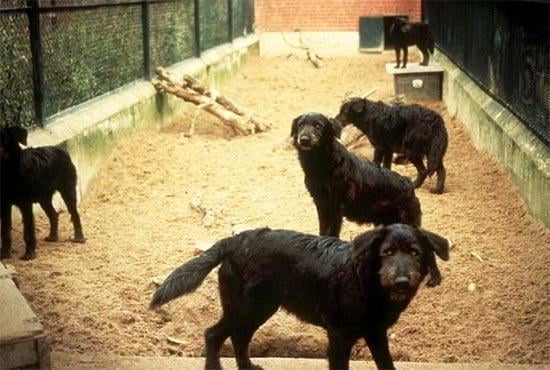
F1 Puwos
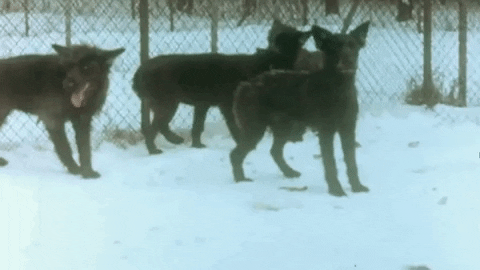
F1 Puwos
The complexity increased with the second-generation hybrids (F2), which resulted from the interbreeding of F1 puwos. This new generation displayed even greater diversity in appearance and behavior, with many showing significant aggression and posing training challenges.
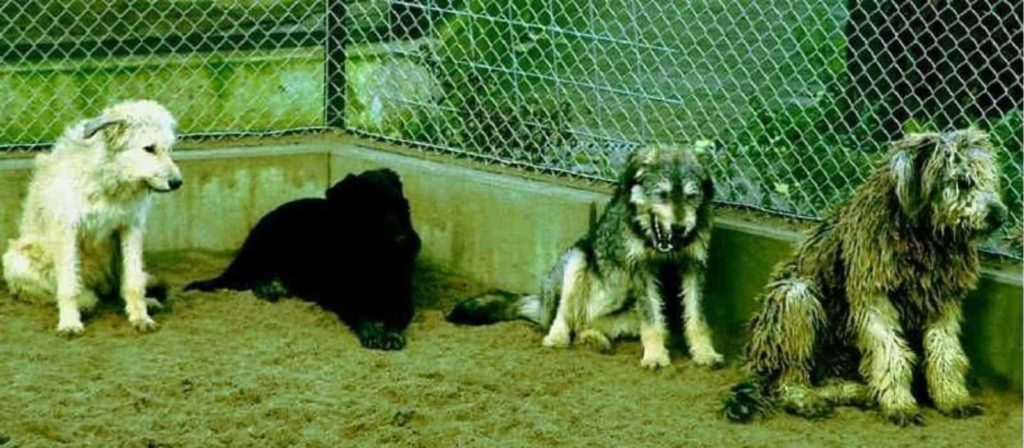
F2 Puwos
Zimen’s research indicated that traits such as a reduced flight instinct and enhanced sociability could be inherited. However, he noted that these traits needed to be combined for a wolf to evolve successfully into a domesticated canine. His work underscored the profound differences between wild and domestic canines and emphasized the intricate interplay of genetics and environment in shaping animal behavior.
Key Points of the Experiment
-
Retained Behaviors: Poodles retained about 64% of wolf behaviors, albeit with minor modifications, demonstrating a strong genetic link between the species despite their separate evolutionary paths.
-
Modified Behaviors: Approximately 23% of the behaviors observed in wolves were also seen in poodles but had undergone significant alterations. These poodle behaviors often seemed more playful or less coordinated, reflecting the influence of domestication on the expression and purpose of behavior.
-
Behavioral Disappearance: An absence of 13% of wolf behaviors in poodles suggests these behaviors were lost or heavily modified through the domestication process.
-
Communication Differences: While wolves employ a complex array of communication cues, including facial expressions, body language, and vocalizations essential for their survival, poodles display these behaviors in a more simplified manner or not at all, likely due to domestication reducing the need for such elaborate signals.
-
Hybrid Behaviors – First Generation (F1): The F1 poodle-wolf hybrids demonstrated a wide range of behaviors, from friendly and sociable to aggressive, highlighting the unpredictable nature of cross-species breeding.
-
Hybrid Behaviors – Second Generation (F2): The F2 hybrids exhibited an even more comprehensive array of behaviors, often more challenging to train and displaying increased aggression. This suggests that while certain behaviors may be inherited, the blending of wild and domestic traits can result in complex behavioral outcomes.
-
Inheritance of Traits: The study indicated that traits such as a decreased flight instinct and greater sociability could be passed down independently. Nevertheless, for domestication to fully transform a wolf into a dog, these traits need to be integrated, indicating the need for multi-trait selection in the domestication process.
In conclusion, Zimen’s research provides a comprehensive look into the evolution of domesticated dogs from their wild ancestors, highlighting the complexity of animal behavior and the delicate interplay of genetics and environmental factors. Reflecting on Zimen’s legacy, we gain a deeper understanding of the domestication process, its profound effects on animals, and the innate complexities within our beloved pets, echoing their wild origins and the transformative impact of domestication.
Reference
Zimen, E. (1987). Ontogeny of approach and flight behavior towards humans in wolves, poodles, and wolf-poodle hybrids. In H. Frank (Ed.), Man and wolf: Advances, issues, and problems in captive wolf research (pp. 275–292). Dr W Junk Publishers.
